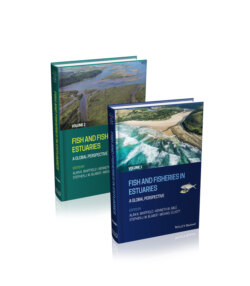Читать книгу Fish and Fisheries in Estuaries - Группа авторов - Страница 76
3.5.2 Habitat destruction and degradation
ОглавлениеHabitat destruction in estuaries began with human settlement and conversion of many marshes into agricultural lands or modified by dredging and filling (Gedan et al. 2009, Gedan and Silliman 2009). Another obvious and ongoing form of habitat destruction results from the cumulative effects of urbanisation (Wolanski et al. 2019).
In Chesapeake Bay, increasing sediment loads and higher turbidity have led to lower seagrass abundance and productivity (Kemp et al. 2005), reducing seagrass habitats that are important for juvenile fish production. Somewhat similarly, deforestation in the Columbia River watershed has increased sedimentation and decreased stream shading and thus negatively affects Pacific salmon habitats that serve as spawning areas and nurseries (Kelly et al. 1999). One subtle but frequent form of habitat degradation in estuaries is the elimination and fragmentation of nearshore, shallow‐water habitats through dredging, filling and hardening of shorelines that often are prime nurseries for the development and recruitment of estuarine fishes. Such degradation is evident in Europe (Rochette et al. 2010, Franca et al. 2012) and North America (Ruiz et al. 1993, Morley et al. 2012). A counterintuitive example for the San Francisco Bay and Delta documents the increase in littoral fishes, primarily associated with nearshore juvenile nurseries that are increasingly dominated by invasive aquatic plants (Mahardja et al. 2017), a contrast to the concomitant declines in reproductive success of pelagic fishes in this system (Sommers et al. 2007).
Plant invasions of estuaries are common and can degrade habitat, but few are known to affect fish populations in temperate estuaries. One exception is the invasion of Phragmites australis into salt marshes across the northeastern USA in the last 100 years (Chambers et al. 1999) during which a European lineage of P. australis has aggressively displaced native marsh grasses (Saltonstall 2002, Myerson et al. 2010). The result is that marsh surfaces have been elevated, with losses of surface standing water that serve as nursery habitat for resident fishes such as Fundulus heteroclitus (Windham & Lathrop 1999, Lathrop et al. 2003, Osgood et al. 2003). The marsh alterations become more pronounced as the P. australis invasion progresses (Able et al. 2003, Lathrop et al. 2003, Hunter et al. 2006).
Urbanisation of estuaries is increasingly common and often occurs along altered shorelines, resulting in losses of shallow‐water refuge (Furukawa & Okada 2006, Wolanski et al. 2019 and references therein). Degradations of estuaries that could result in reduced reproductive and recruitment success are observed in numerous estuaries, for example the James River sub‐estuary in Chesapeake Bay (Bilkovic & Roggero 2008), estuaries in New England (Bertness et al. 2002, Able & Grothues 2018) and other temperate (Balouskus & Targett 2018, Crum et al. 2018) and subtropical (Krebs et al. 2014) regions.
Many estuaries are artificially channelled or canalised in the lower reaches, resulting in a loss of shallow water refuge for young fishes (Macura et al. 2016). A case from the Kowie Estuary in South Africa demonstrated the lower abundance of early developmental stages in canalised marina areas when compared to natural estuary margins – canalisation reduces vegetation cover and shallow refuge increasing the level of predation on young fishes in these areas (Kruger & Strydom 2010).
In a clear example of urbanisation effects on young‐of‐the‐year fishes, habitat‐specific research in the heavily impacted Hudson Estuary (USA) demonstrated the negative effects of shading by large piers on growth and abundance of the age 0+ pleuronectid Pseudopleuronectes americanus and labrid Tautoga onitis (Able et al. 1998, 1999, Duffy‐Anderson & Able 1999, 2001, Metzger et al. 2001, Duffy‐Anderson et al. 2003, Able & Duffy‐Anderson 2006, Grothues & Able 2020). Similar negative effects of shading by large over‐water human‐built structures were reported for migrating salmonids in the Pacific Northwest of North America (Ono & Simenstad 2014).
